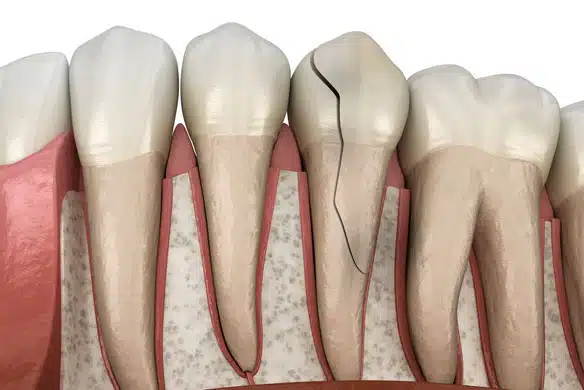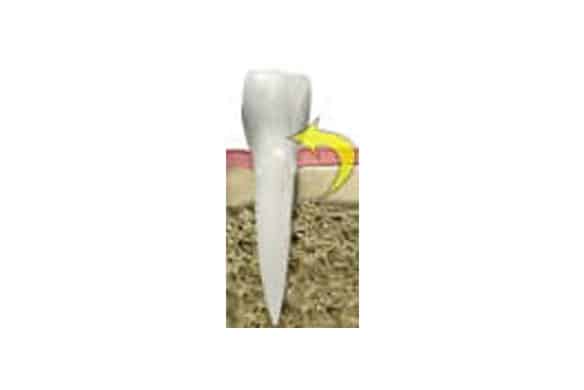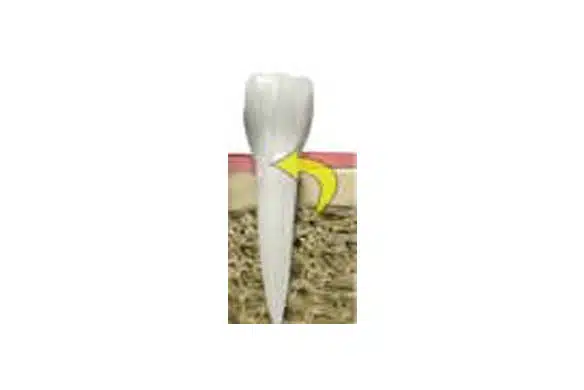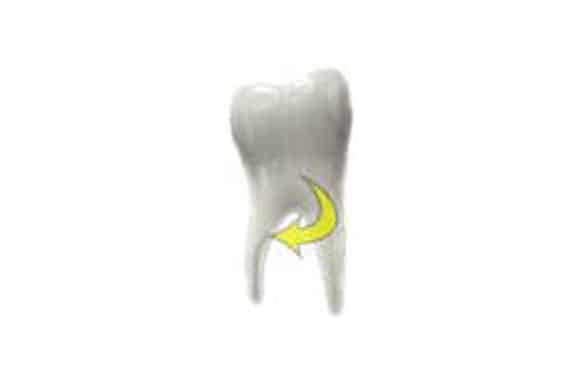A tooth with a cracked root may be difficult to identify. An intermittent toothache can be indicative of a cracked tooth. Other symptoms may include pain when chewing, temperature sensitivities, or throbbing at different times of the day.
Types of Cracked Teeth and Restoration

Craze lines
Tiny surface cracks on the outer enamel of the tooth are more common in adults and are usually of no concern.
Fractured Crown - Cusp
A structural crack that weakens the cusp of the tooth may fracture. The cusp may break off or may require being removed by a dentist. A damage to the pulp with this type of fracture is rare, so a root canal is usually not necessary. This type of cracked tooth is usually restorable with a dental crown.


Cracked Tooth
A crack that extends from the chewing surface of the tooth down towards the root may compromise the structure and health of the tooth. The crack may extend below the gum line and even into the root. Damage to the pulp is common. A cracked tooth that is not treated will split under pressure, resulting in the loss of the tooth. Early detection is essential to save the tooth. Maybe restorable with Root canal treatment and a dental crown.
Split Tooth
A split tooth is the result of an untreated cracked tooth or severe trauma. The crack will eventually fracture the tooth. In most cases, a split tooth cannot be repaired. Depending on the location of the split, its possible that the tooth root may be saved. Maybe restorable with Root canal treatment and a dental crown.


Vertical Root Fracture
A vertical root fracture starts at the root and extends up towards the crown of the tooth. Sometimes a portion of the tooth can be saved by removing the fractured root. Treatment involves Endodontic surgery. A dental implant and/or a dental crown can be used replace or restore the tooth. Maybe restorable with Oral Surgery.
Root canal alternatives
In some cases, a dental implant and dental surgery may be preferable to a root canal and offers a more secure root for the crown replacement. Based on the location of the tooth, a dental bridge may offer the patient with a second alternative. Not replacing a damaged tooth leads to dental disease and subsequent failure of the adjacent teeth.
Dr. Clausen can help the patient to decide which treatment meets their needs.
